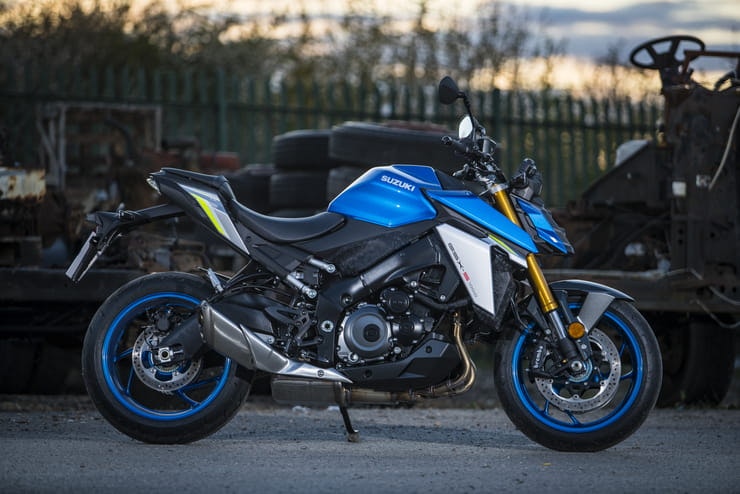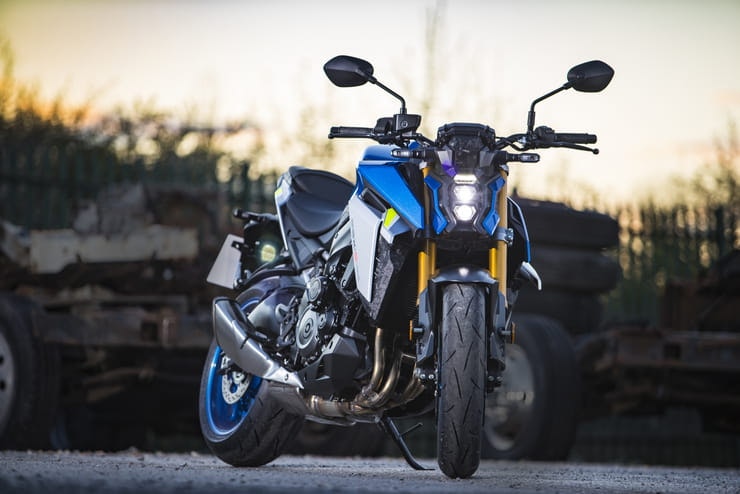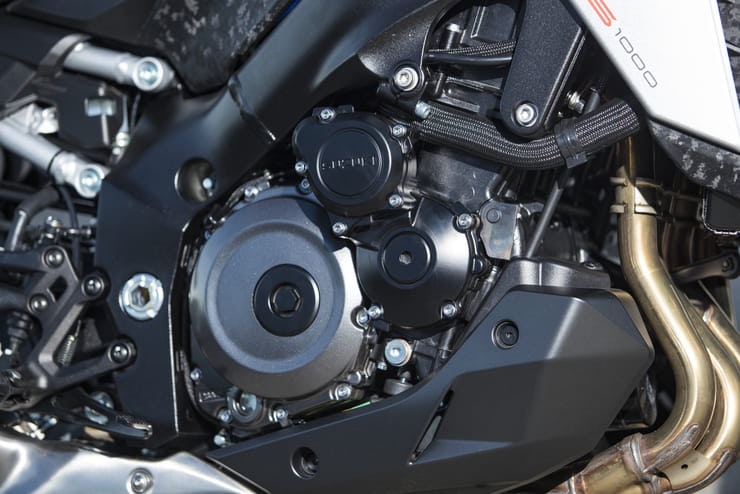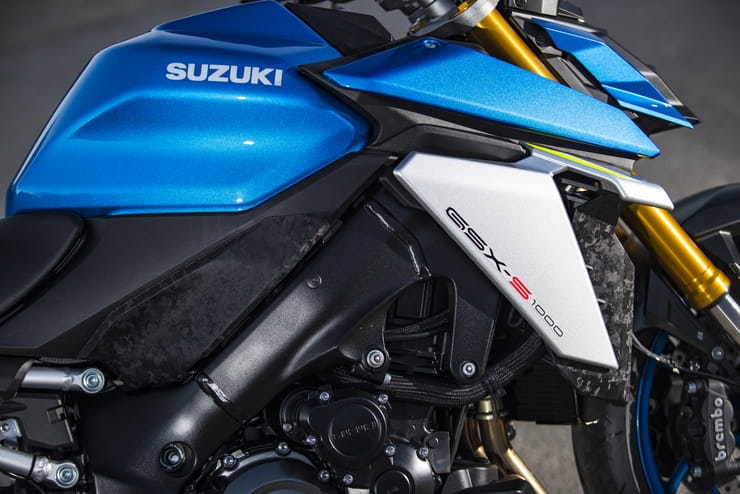New 2021 Suzuki GSX-S1000 details and price
By Ben Purvis
Motorcycle Journalist
26.04.2021
In an increasingly competitive market for superbike-derived naked streetfighters Suzuki’s GSX-S1000 has been increasingly thanks to dated styling and mid-pack performance. A mid-life refresh to bring it into line with Euro 5 emissions rules has long been in the pipeline but Suzuki has sprung a surprise by adding a complete restyle into the bargain.
New Suzuki GSX-S1000 prices
And ‘bargain’ is an apt word, as despite making the leap from old-fashioned to cutting edge on the styling front, Suzuki has added only £300 to the bike’s price, with the 2021 GSX-S1000 hitting dealers in June at £10,999. That’s £1500 less than a Yamaha MT-10 and £2000 less than the new 2021 Honda CB1000R in its initial ‘Black Edition’ form, and also undercuts the mechanically similar Suzuki Katana by £500.
The transformation is a clever one, as Suzuki has managed to achieve a completely new look for the GSX-S1000 without having to invest heavily in a complete mechanical redesign.
All the big, expensive components – the frame, the engine, the suspension, swingarm and wheels – are largely carried over either unchanged or with minor tweaks, but they’re wrapped in bodywork that completely transforms the bike’s appeal and topped with a dressing of modern electronics.
Let’s start with that styling. Where the old model was dowdy, the new one is dynamic. Straight edges and flat surfaces replace bulbous panels, with a design that manages to shift the visual weight of the bike forward to follow the latest trends, giving the impression that all its mass is centralised in a small, densely packed area. Panels extend forward from the sides of the new fuel tank, with radiator shrouds below them and – of course – winglets jutting from each side. They draw the eye to a smaller nose cowl that sets the new, stacked LED headlights further back than before, adding to the impression that everything has been compacted.
There’s a similar visual trick at the back of the bike where the rear bodywork is simplified, exposing more of the seat subframe. A matte black rear section makes the tail look shorter, even though the bike’s proportions are actually much like the old model.
The frame is unaltered, so all the hard points that the new bodywork mounts to are the same as before. However, where the old GSX-S1000 used acres of black plastic or painted bodywork to hide its mechanical bits, the new one plays with different textures and finishes. Particularly notable are the front section of the radiator shrouds, the centre of the nose cowl and the side panels below the tank, which have a marbled look that’s reminiscent of the forged composite panels that are popular with high-end supercar manufacturers at the moment.
The engine is still the GSX-R1000 K5-based design of the old model, but with changes to improve emissions without reducing performance. Its roots might go back to 2005, but the K5 is widely considered the high point of the GSX-R1000’s history, so the engine is a great starting point.
The alterations include new camshafts with different cam profiles and less overlap, new valve springs, a different clutch, new throttle bodies, a new airbox and a revised exhaust with an additional catalytic converter.
While improved emissions often go hand in hand with reduced power, the 2021 GSX-S1000 actually gets a couple more horsepower than before, peaking at 150bhp (152PS) instead of 148bhp (150PS). It revs harder, too, with the peak power coming at 11,000rpm instead of 10,000rpm.
Suzuki also says the engine has more area under the torque curve and a better, broader spread of performance in the lower reaches of the rev range than before. So, lower emissions and more performance – what’s not to like?
There is a downside, though, and it’s the fuel consumption. Where the old 2020-spec GSX-S1000 was good for a claimed 53.3mpg, the new one will only do 46.26 miles on each gallon. To compensate, the fuel tank capacity rises from 17 litres to 19 litres, ensuring the range between fill-ups isn’t hampered but that those fill-ups will each cost a bit more.
On the electronics side of things, the new ride by wire throttles are tied to a riding mode selector that allows three engine maps – all with the same peak power but different delivery. There’s also a five-mode traction control system (which can be switched off entirely if you want), plus an improved dash that comes from the current GSX-R1000, although it’s still a simple LCD design rather than a colour TFT as used by increasing numbers of its rivals.
An up-and-down quickshifter, including a throttle blipping system for downchanges, is also standard, along with a one-touch engine start system and a low-rpm assist that helps prevent stalls by increasing engine revs as the clutch is engaged.
There’s no essential to the suspension or brake components, despite the more exotic appearance of the forks thanks to gold-coloured uppers instead of the old black ones. The forks and shock are KYB, with full adjustment at the front and preload and rebound at the back. The settings for the new bike are revised, though, so we can hope for an incremental improvement in handling.
A bigger change in the bike’s feel is more likely to come from new, wider bars – 23mm broader than before and mounted 20mm further back, they should give more leverage than the old ones, as well as better comfort.
The brakes, as before, are Brembo monobloc radial calipers on 310mm discs, which should be more than up to the job.
Dealers are expected to get the new GSX-S1000 in stock at the end of June, with three colours on offer: the MotoGP-style blue and silver combo, a more subtle grey option or an all-black version.
Of course, the new bike leaves one very obvious question: with a new GSX-S1000 hitting dealers soon, where’s the updated, Euro5-compliant version of its faired sibling, the GSX-S1000F? Suzuki might not have finished launching its new models quite yet.
Share on social media:





